- What Is Content Marketing?
- A Mindset Shift about Content Marketing
- Why Content Marketing Matters for FMCG Brands in the Middle East?
- Digital Behavior in the UAE
- Marketing Challenges in the FMCG Space
- Content as a Strategic Solution
- Business Goals of Content Marketing for FMCG
- Effective Content Types for FMCG Brands
- Short-Form Videos
- Localized Blog Content
- Social Campaigns
- User-Generated Content and Customer Stories
- Product Usage Guides or Recipe Content
- Regional Best Practices of Content Marketing for the UAE Market
- Focus on Mobile-First Experiences
- Align Content with Key Moments
- Leverage Local Influencers for Credibility
- Create Arabic + English Content for Wider Reach
- Sync with Retail and E-commerce Partners
- Case Studies and Real-World Examples of Content Marketing for FMCG Brands
- Long-Term Benefits of Content Marketing
- Organic SEO Growth
- Higher Retention and Brand Equity
- Stronger CRM and Retargeting Funnel
- Zero-Party Data Opportunities
- Common Mistakes FMCG Brands Make about Content Marketing
- Treating Content as a Short Campaign
- Focusing on Product Instead of Audience
- Lacking a Measurement Strategy
- A Competitive Edge, Not a Luxury
Consumers in the UAE and across the Middle East are making quick and informed choices on their mobile phones. According to an article by Communicate, smartphone usage exceeds 96%, and most people are active on social media platforms.
These individuals are not just buying products; they are looking for the brands that align with their values. Therefore, trust and loyalty play a key role in their purchasing decisions - even when choosing everyday items like snacks, cosmetics, and household goods.
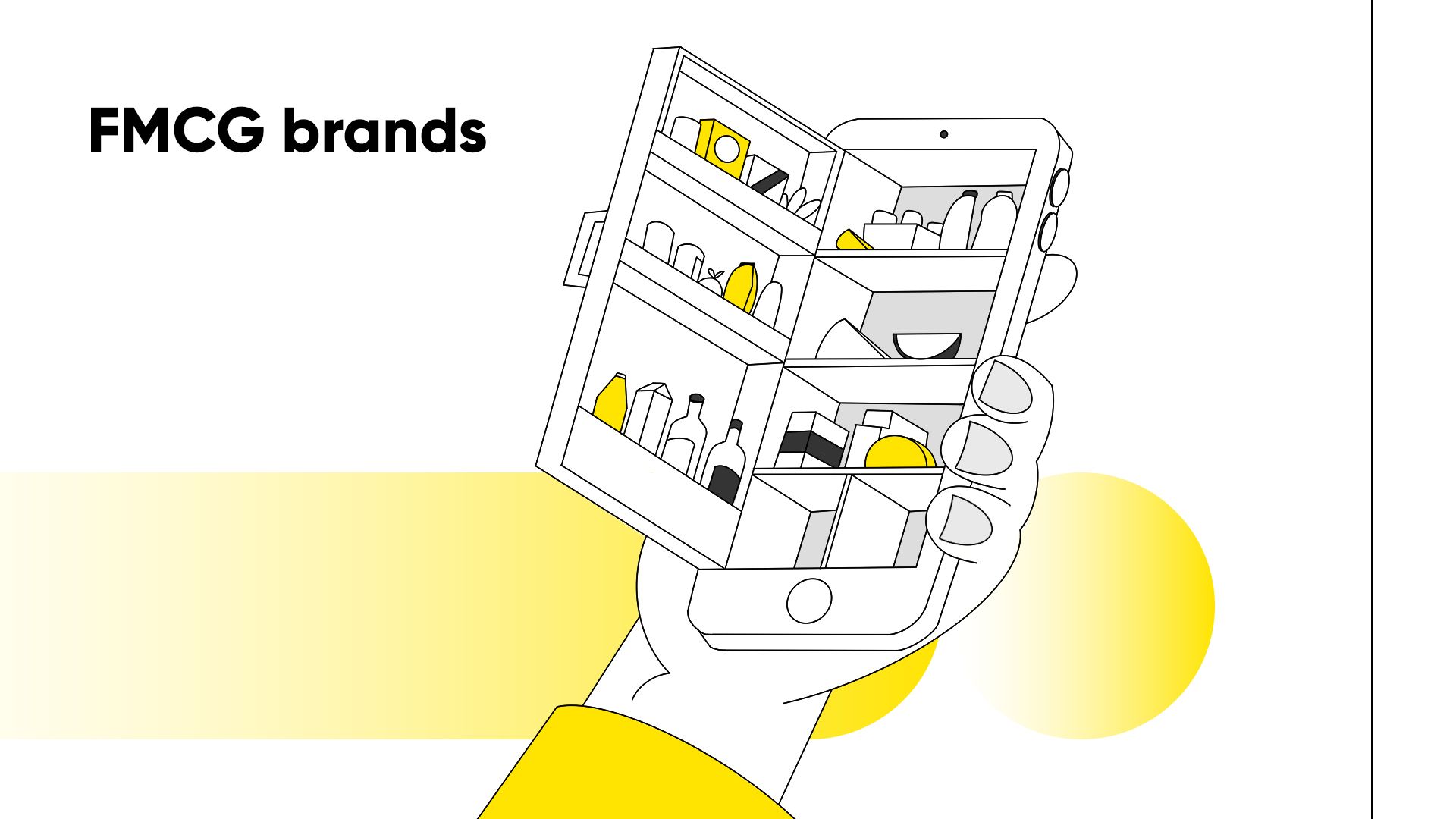
What Is Content Marketing?
Simply put, content marketing is a strategic process of creating and sharing valuable content to attract and connect with the audience. The main focus is on long-term sales and trust instead of pushing sales messages and ads.
key features of content marketing include:
- Sharing interesting and useful content
- Building long-term value for customers
- Giving information and entertaining the audience
- Gaining trust though helpful content
- Attracting customers naturally instead of pushing ads to them
A Mindset Shift about Content Marketing
There are two main approaches to advertising:
- Traditional advertising (push marketing)
- Content marketing (pull marketing)
In the traditional approach, FMCG brands interrupt people through messages or TV spots that aim to prompt immediate purchases. This short-term strategy mainly focuses on driving sales.
But what is content marketing? It is more than a set of blog posts or social media campaigns. It is a pull-based strategy that draws customers in by providing helpful and reliable content. The goal is to build trust and long-term interest in the brand.
Thus, the key differences between these two approaches include:
- Push marketing involves abrupt advertising to drive immediate sales.
- Pull marketing focuses on slowly attracting the audience and building a sense of trust.
To understand “What is content marketing” in practical terms, consider the following examples of FMCG content campaigns in the Middle East.

Watch the full video on Instagram
- Unilever (Sustainability Campaign): In late 2024, Unilever launched a campaign in the UAE that linked grocery shopping with mangrove planting. This campaign was a combination of advertisement and education about climate change. The results were remarkable. According to the Campaign Middle East, the campaign was seen over 63 million times and viewed by 9.8 million people. Also, the videos were seen 7.1 million times, and brand awareness increased by 8%.
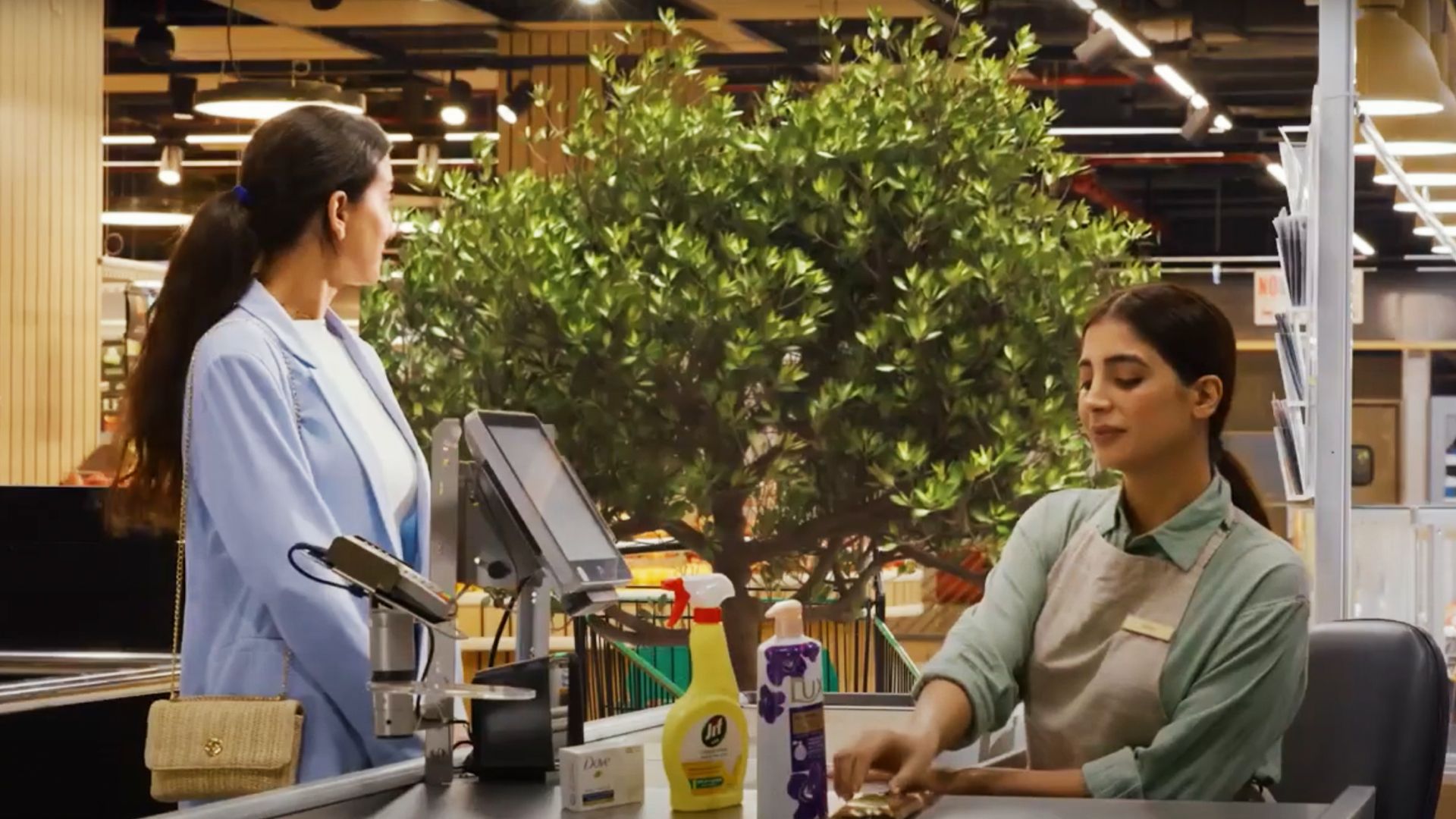
Why Content Marketing Matters for FMCG Brands in the Middle East?
Content marketing is considered so important in FMCG brands in the Middle East, especially in the UAE for these three main reasons:
- Consumers are digitally savvy and mobile-first
- FMCG brands deal with marketing challenges
- Content marketing offers a strategic solution to educate, differentiate, and build trust
Digital Behavior in the UAE
Consumers in the Middle East, especially in the UAE, are deeply engaged in digital life and mobile phones play a central role in shopping. On average, a person in the UAE spends 3 hours a day on social media. Furthermore, the mFilterIt article highlights that over 80% of shoppers use their phones to shop online, and 70% use social media to talk to salespeople.
Even for buying small things like snacks, cosmetics, or drinks, they go on the Internet and find the best and quickest way. Also, PWC reports that around 50% of buyers use search engines to look for products, and 41% use social media to check them out.
People usually tend to scroll through Instagram or TikTok to understand more about special products. Or they prefer watching short videos before making a final decision.
The popularity in reading review summaries and watching short videos reveals that short-form, fast-paced content is preferred over other types. So brands have only a few seconds to advertise their products and draw attention.
Marketing Challenges in the FMCG Space
FMCG brands in the Middle East face numerous challenges due to the nature of their products and the highly competitive market in the region. The main challenges are as follows:
- Saturation and price competition: There are many similar products in the FMCG market, which makes it more difficult for the brands to stand out. In this market, being unique matters, so competitors will do their best to attract buyers.
- Low consumer loyalty: With a variety of choices and special offers for different products, shoppers in the GCC are very responsive to such offers. For instance, in Saudi Arabia, temporary discounts can significantly influence people’s decisions. Therefore, they prefer some brands over others only because of the lower prices, which means sacrificing loyalty to get better deals.
- Difficulty in building an emotional connection: It is challenging for FMCG brands in the Middle East to build an emotional connection with consumers, mainly because the products are everyday items such as shampoo, snacks, or soft drinks. This has turned consumers into impulsive buyers. So, instead of spending more time buying an item, they just pick one. As a result, FMCG cannot create emotional feelings about its products, unlike items like chocolate, which can bring back nostalgic memories for buyers.
Content as a Strategic Solution
In the Middle East, brands can attract customers and build loyalty by using content marketing rather than competing on price or extensive advertising. Content helps brands in three key ways by following these approaches:
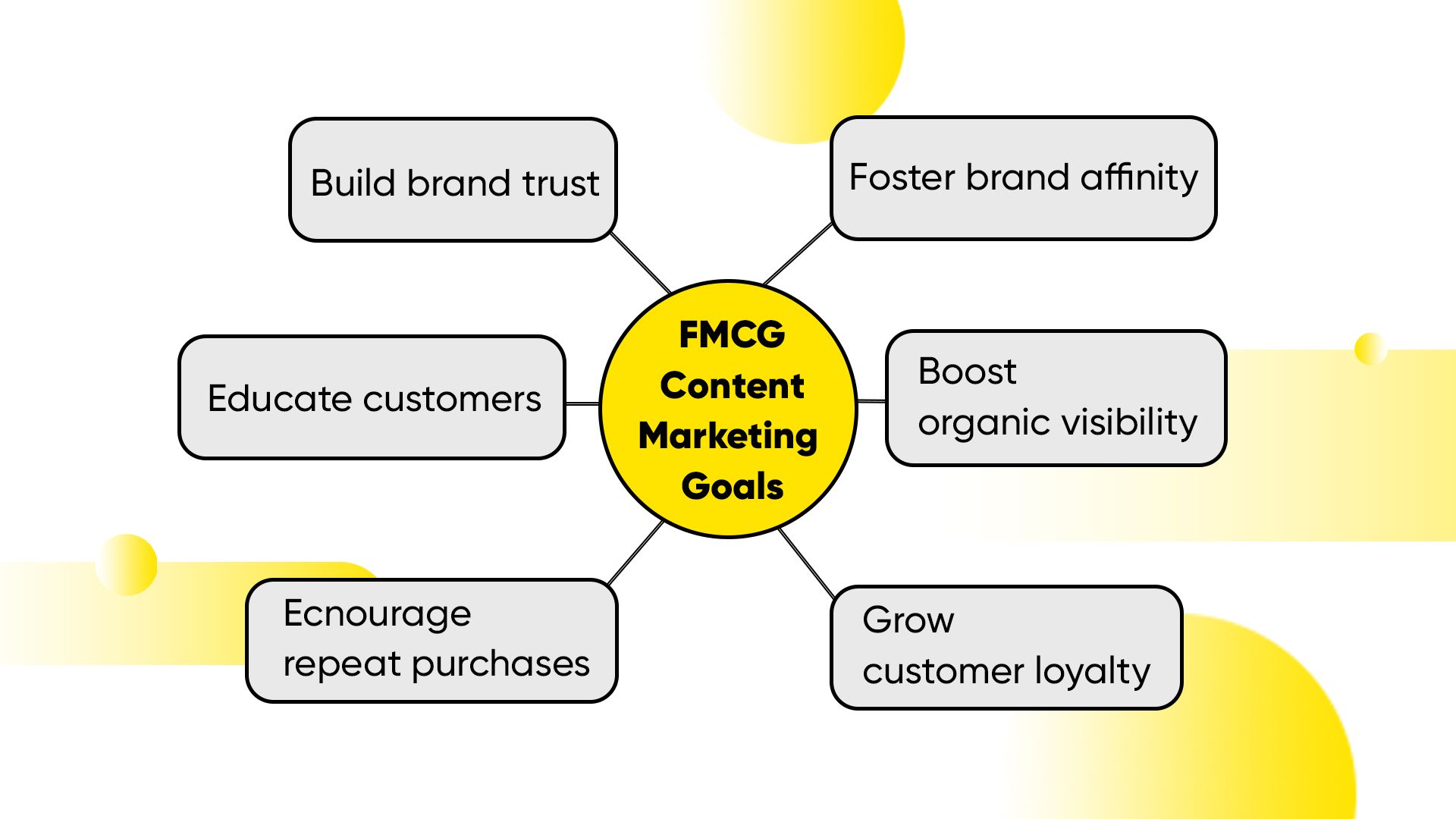
Business Goals of Content Marketing for FMCG
As mentioned, content marketing focuses on the strategic creation of valuable content for the audience. Therefore, it plays a key role in building trust and affinity, educating customers with valuable content, increasing organic visibility, and encouraging repeat purchases and customer loyalty. This section of the article will elaborate more on each of these goals.
- Building brand trust and affinity: To make a brand popular, it is important to build trust and connect with people emotionally. Paper Content indicates that Dove’s “Real Beauty” campaign showed real women in its advertisements to create an emotional connection with the audience. In addition, as reported by Globe NewsWire, agencies such as Lamana also help brands create content that fits Middle Eastern culture. For example, Mogu Mogu, a famous drink brand, gained positive reactions and increased visibility by 30%, since Lamana helped the brand build stronger connections with local consumers

Watch the full video on YouTube
Educating customers with valuable content: Consumers like to learn and gather relevant details about a product before buying it. Brands that provide people with useful information tend to be more trustworthy. When a brand knows “What is content marketing”, it can share helpful educational content and show customers that it cares about their needs. This can also help premium brands explain the reason why their products are more expensive by talking about the quality or health benefits. For example, a skincare product might post articles about ingredients or skincare routines. So, it both promotes the brand’s expertise and enhances people’s knowledge and awareness.
Increasing organic visibility: To help people see a brand and talk about it, brands need to create robust content and be visible on Google and social media. This is called organic visibility and share of voice, which shows how much the brand is in the public interest compared to its competitors. Take the “All Things Hair” website as an example. The Green article revealed that by providing helpful content and focusing on the audience’s needs, a brand can increase its visibility and get the majority of search traffic. This would have cost £26.9 million ads to achieve the same. For FMCG brands, this organic visibility indicates that more people discover and trust the brand, as they see it when seeking solutions. Finally, Lamana supports this by using SEO, Arabic content, and local feedback. For example, Mogu Mogu increased its visibility by 30% and gained more market share.
Encouraging repeat purchases and customer loyalty: Content marketing not only increases people’s awareness about a product, but also encourages product trials, repeat purchases and customer loyalty. Maggi’s Ramadan campaign is one of these examples. It shared videos about food recipes with people on the website. This encouraged many of them to try its product for the first time. To keep customers coming back, many FMCG brands share new recipes or product ideas with people. A coffee brand, for instance, can email coffee recipes weekly and motivate customers to buy again. In the long run, useful content fosters emotional connections and loyalty. Pampers does this by sharing parenting tips, so parents feel supported and stay loyal to the brand.
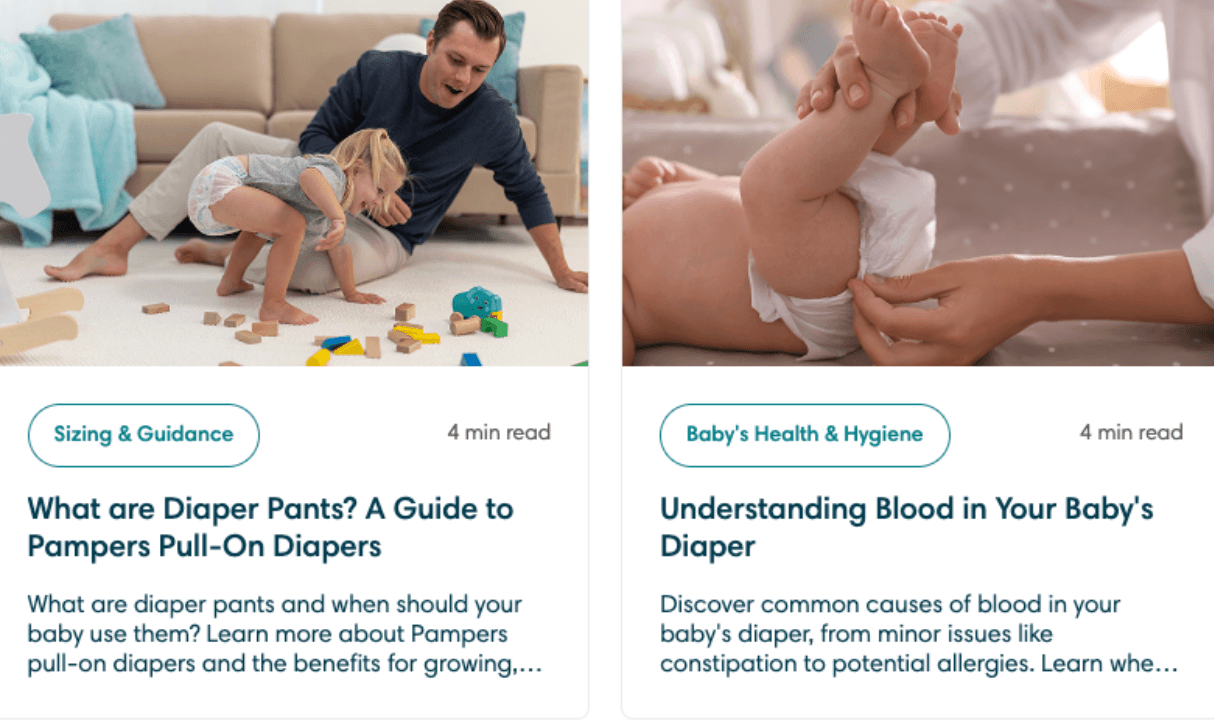
Effective Content Types for FMCG Brands
We live in a fast-moving world, so creating the right content can make a big difference for FMCG brands. The content needs to be useful, relevant, and engaging in order to raise people’s awareness and encourage them to interact with the brand.
Here are five effective content types for FMCG brands that work really well, especially in the Middle East market.
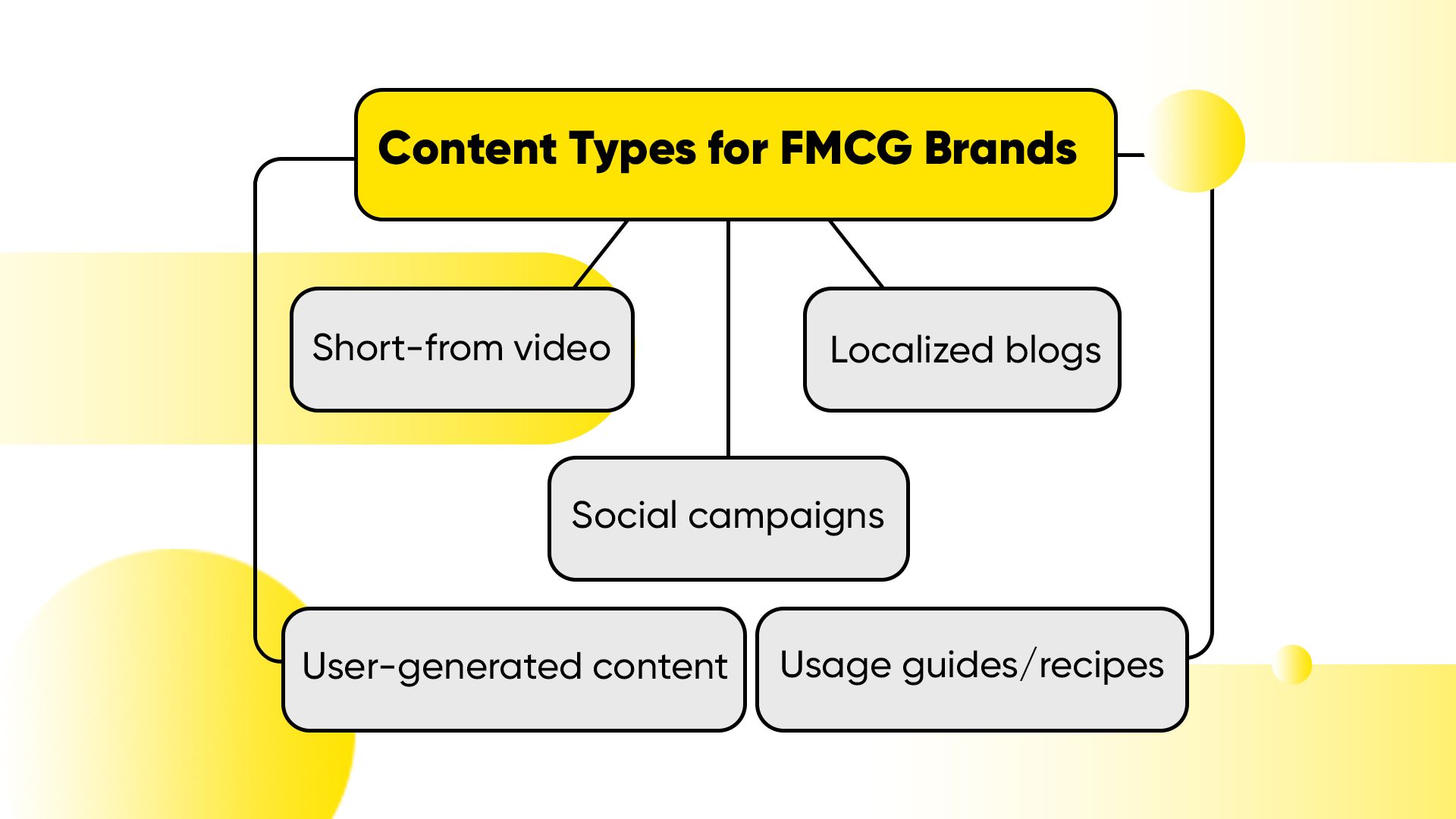
Short-Form Videos
Short-form videos on platforms like TikTok and Instagram Reels are very popular and perfect to grab people’s attention in just a few minutes. These short videos are often more engaging than longer ones or even blog posts, as they are quick and easy to watch. So it is more likely that people finish and share them, especially in the Middle East where people use their phones for everything. The result is that brands can sometimes garner millions of views and achieve significant awareness.
Localized Blog Content
Creating Arabic content in a local tone or dialect can be a smart move for brands in the Middle East. People feel closer to a brand when they see its content in their own language. Adgully states that because there is not a limited amount of Arabic content online compared to English (around 5% of digital content), it receives more views, especially when written in both English and Arabic.
Almarai’s Ramadan Blog Series in 2025, for instance, launched a bilingual blog series for Ramadan instead of translating English content into Arabic. The Arabic posts were written in a conversational tone, using regional references that appealed to local readers. The result was a 40% increase in organic traffic during Ramadan, along with greater visibility on social media.
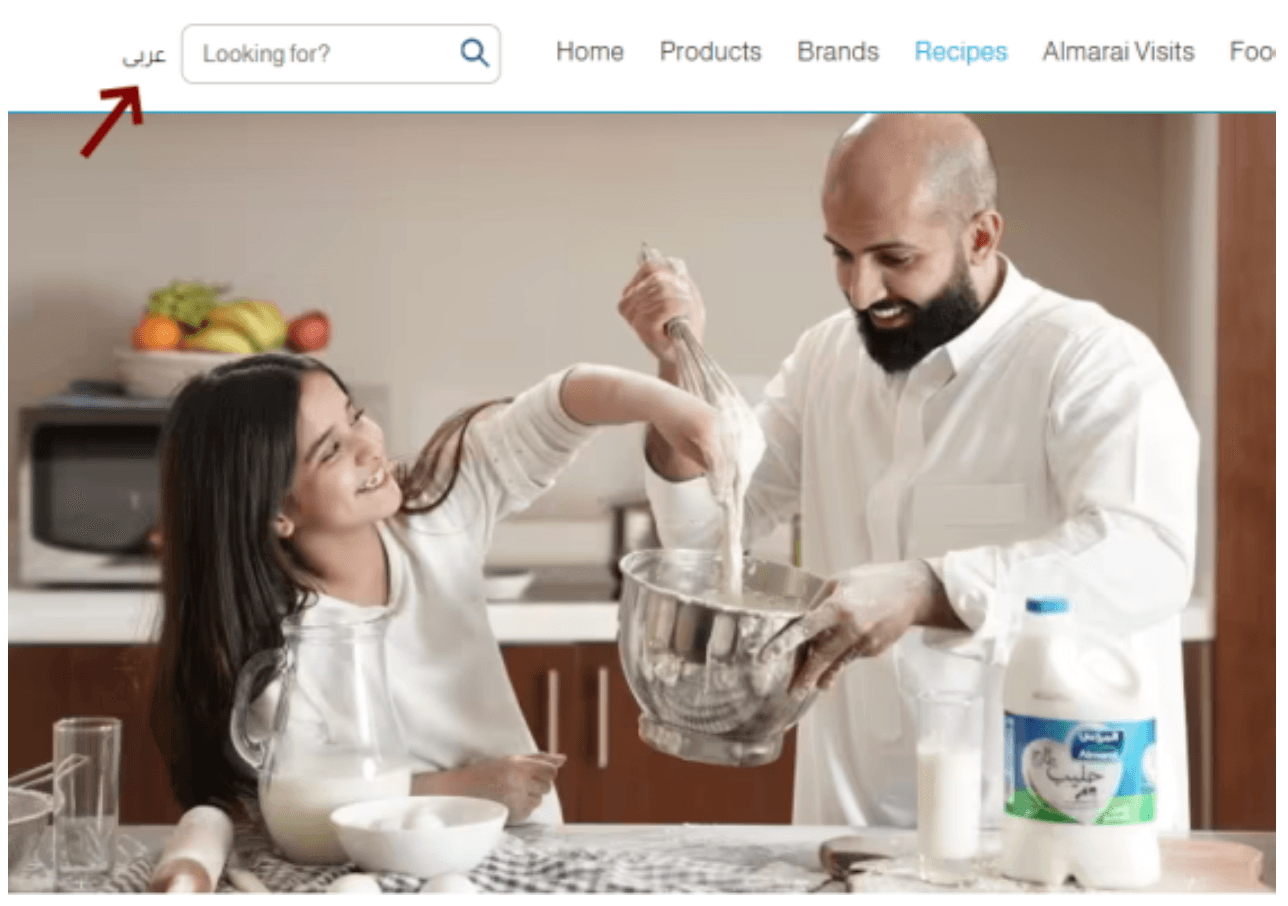
Social Campaigns
Social campaigns such as quizzes, polls, and challenges are an effective way to engage the audience. They not only draw their attention, but also invite them to participate. These kinds of campaigns can turn passive viewers into someone who actively interacts and even shares the content with friends.
During Ramadan, for example, many Middle Eastern brands run quizzes or contests, which can build stronger emotional connections with people. The visibility of these posts increases because they often get more likes, comments, and shares.
User-Generated Content and Customer Stories
Customers can have a great impact on other people by sharing their own posts, videos, or stories about a product they recently used. The main reason is that user-generated content (UGC) seems to be more honest than traditional ads and people feel more confident about it.
Many brands, like Starbucks, encourage users to share their own content on special occasions. Such campaigns create free marketing and make customers feel important.
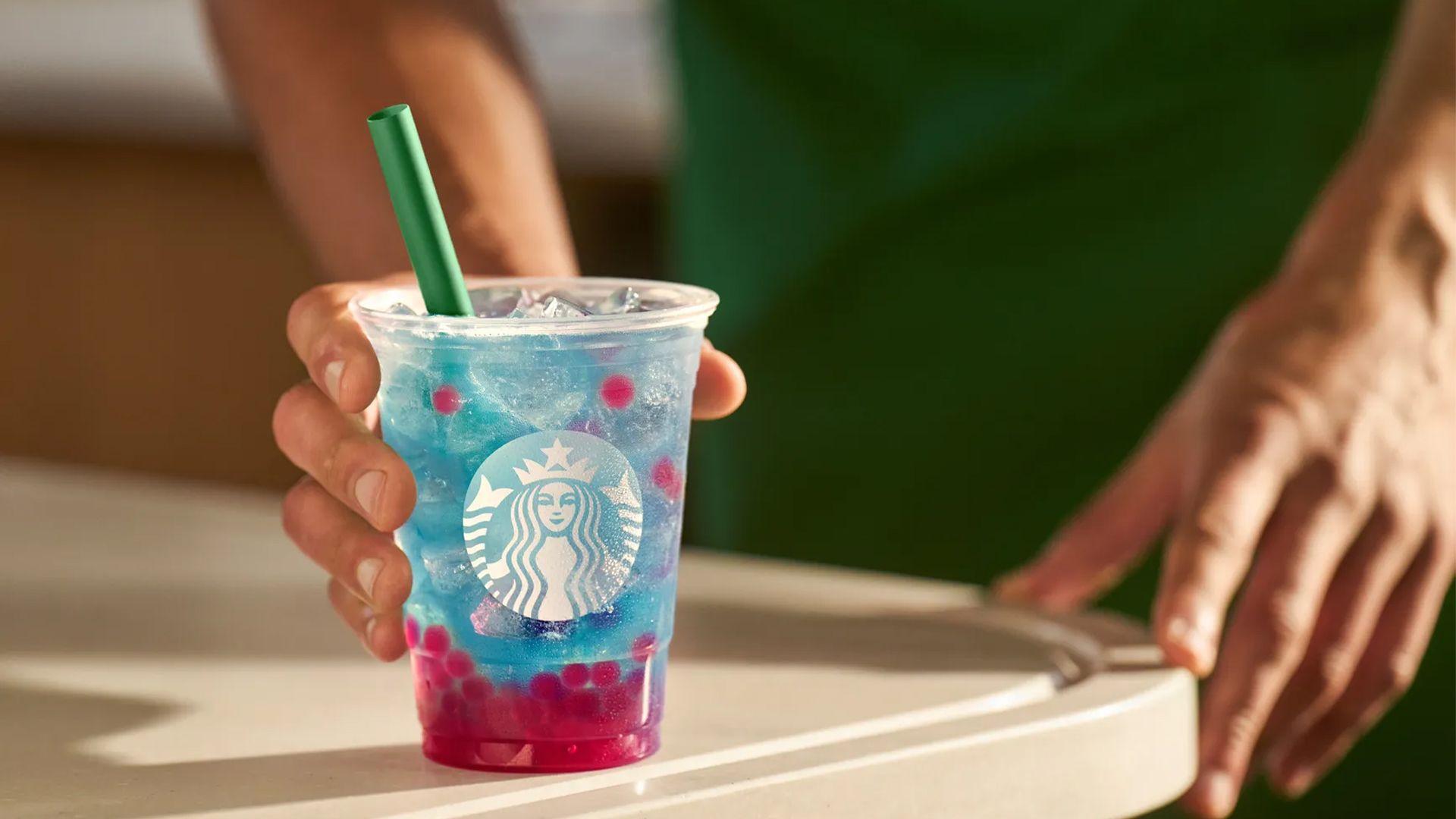
Product Usage Guides or Recipe Content
Showing people how to use a product in everyday life makes the brand more relevant and helpful. It is easy to share content like recipes or how-to guides and boost visibility, especially when linked to local traditions. For example, in 2025, Puck Arabia shared a video that featured Lebanese mothers preparing six traditional dishes using Puck cream cheese, which got high engagement across the region.

Watch the full video on YouTube
Regional Best Practices of Content Marketing for the UAE Market
The UAE is a unique market due to its diverse population with different languages, traditions, and ways of using technology. Therefore, it is important to understand the local audience well and change your marketing approach to meet their needs and culture.
The following outlines effective practices of content marketing for the UAE market.
Focus on Mobile-First Experiences
Most people in the UAE use their smartphones to browse the Internet and get more information about different products. Therefore, different brands, especially FMCG, should prioritize content that looks great and works smoothly on mobile devices. A mobile-first strategy helps attract more users and keeps them motivated.
Align Content with Key Moments
In the UAE, it is very important to align content with key cultural and national events. Ramadan is the biggest one with lots of promotions and special offers. During this month, people care more about doing charity work, visiting their families and relatives, and joining the community.
Influencer Marketing Hub elaborates more on this event and states that one pizzeria in Dubai created a “¾ Pizza Box” during Ramadan to help reduce food waste at Iftar. They also donated part of their sales to the charity.
In another special event called “Expo 2020”, PepsiCo took part by adding Expo branding to their packaging and creating online campaigns that matched the Expo’s themes.
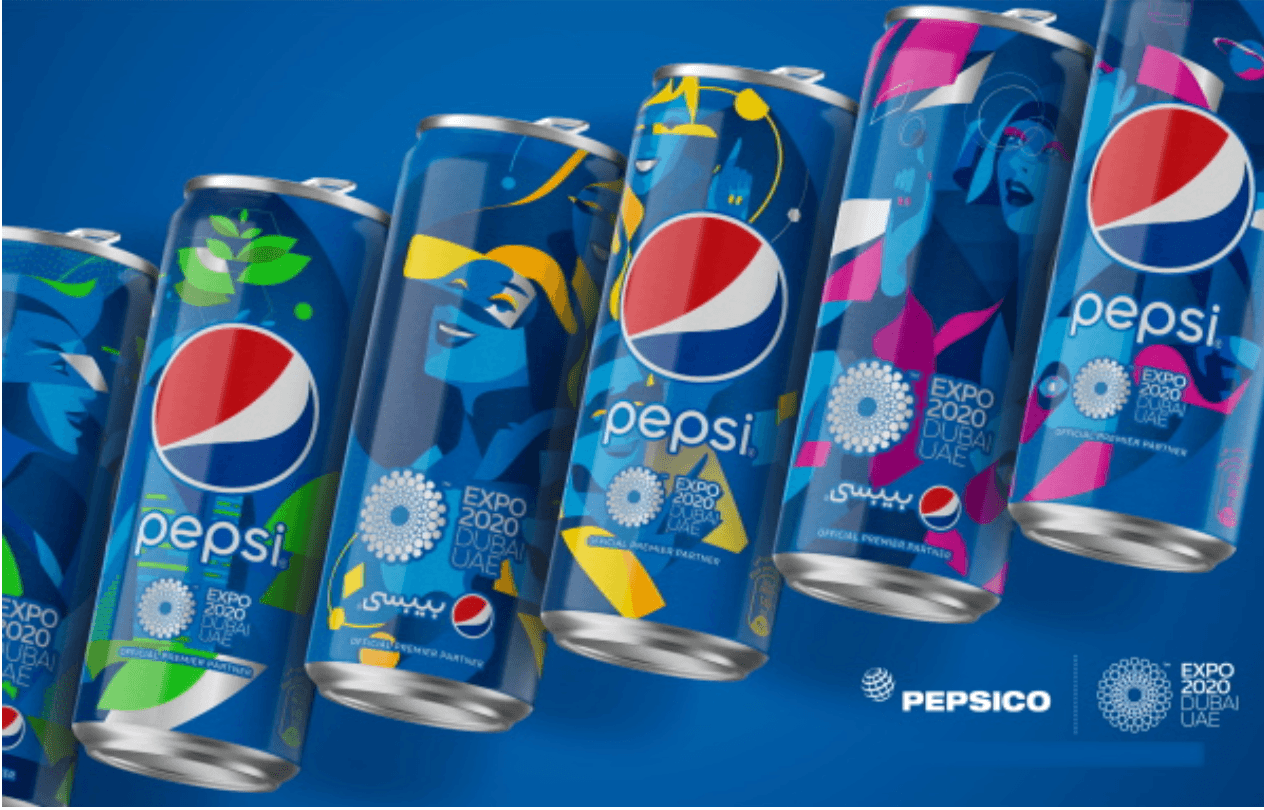
Leverage Local Influencers for Credibility
Working with local influencers in the UAE is a powerful way for FMCG brands to build trust and social proof. However, it is important to choose those whose audience matches the product. People prefer natural and casual posts such as stories and honest reviews over formal ads.
For instance, during the UAE National Day, brands often collaborate with influencers to create content that celebrates national pride. In fact, by using this approach, the FMCG brand makes the audience feel emotionally involved.
Create Arabic + English Content for Wider Reach
As mentioned earlier, creating content in both Arabic and English can affect the Arabic-speaking audience in many ways. An Instagram post, for example, can either have an English caption followed by an Arabic one, or separate posts for each language for the target audience.
However, in order for a brand to stand out, the Arabic content must be localized to account for cultural and linguistic differences. This way, FMCG marketers increase their audience access and gain their attention.
Sync with Retail and E-commerce Partners
To boost sales and visibility, FMCG brands in the UAE should align their content and campaigns with retailers like Amazon and Carrefour. Synchronizing with major sales events such as Prime Day or Ramadan deals, drives search traffic during peak shopping times.
Brands should prepare content specifically for these periods, such as posts about upcoming Amazon deals, unboxings of products, or paid-ad campaigns to boost visibility. This collaboration opens an opportunity for the customers to view the content and make purchases. As a result, the conversion rate would increase.
Case Studies and Real-World Examples of Content Marketing for FMCG Brands
Up to this point, we have learned “What is content marketing” and why it is important for FMCG brands. This part of the article highlights how FMCG brands use content marketing to connect with local people in the Middle East by giving real examples.
Example 1: During Ramadan, Alamari attracted and engaged consumers by sharing traditional recipe videos with Instagram and Facebook influencers. They encouraged their followers to share their own dishes using Alamri products and presented a community-based campaign that was culturally relevant and increased brand interaction.
Example 2: According to the Khaleej Times, A beauty brand in the UAE cooperated successfully with Emirati micro-influencers to share skincare reviews on social media. Since the content was so genuine, it built trust and gained the audience’s attention more than traditional ads.
Global Inspiration: Nestlé’s Maggi brand created a localized video called “Maggi Diaries”, featuring Arab housewives cooking traditional Middle Eastern dishes. Since the content was culturally tailored, it became very popular on TV and built a sense of loyalty in the region.
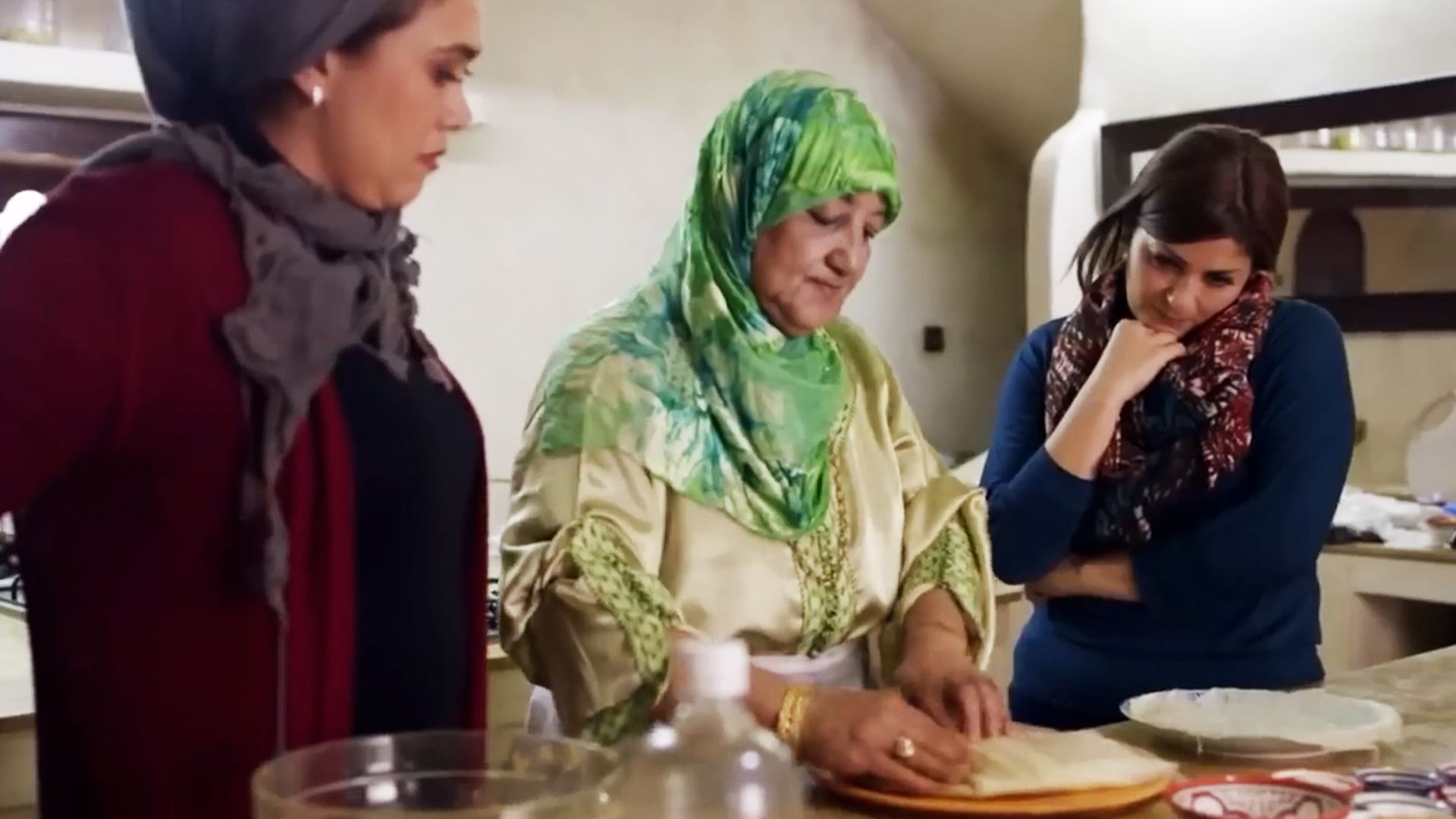
Watch the full video on YouTube
Long-Term Benefits of Content Marketing
In order to understand “What is content marketing” and why it matters for the FMCG brands in the Middle East, we need to know how to convey valuable and appropriate content to make it more useful. Below are four key benefits of this strategy.
Organic SEO Growth
Brands can increase their visibility in local search by constantly creating relevant content, especially in Arabic and bilingual formats, which leads to a continuous rise in natural traffic.
Higher Retention and Brand Equity
If you want to keep your brand visible and trusted, you need to share helpful and related content on a consistent schedule. When the content respects local traditions, it can build emotional challenges and reliability among people, increasing the brand awareness and customer preference in the Middle East.
Stronger CRM and Retargeting Funnel
The list of customer information is stored in a system called Customer Relationship Management (CRM). This list usually includes names, email addresses, phone numbers, purchase history, and interactions that customers have had with the brand.
Digital content engagement results in growing your CRM list and makes retargeting more effective. It turns visitors into leads and lets you track their interests. Of course, most people do not buy on their first visit; therefore, content aims at establishing loyalty and re-engaging them with amazing offers to make stronger connections.
Zero-Party Data Opportunities
FMCG brands can collect valuable zero-party data through interactive content such as quizzes and polls. Unlike third-party data, this type of data is shared directly with the brand. So it is more reliable and respectful of user privacy.
It also enables brands to be more understanding of their audience, tailor offers, and refine their products.
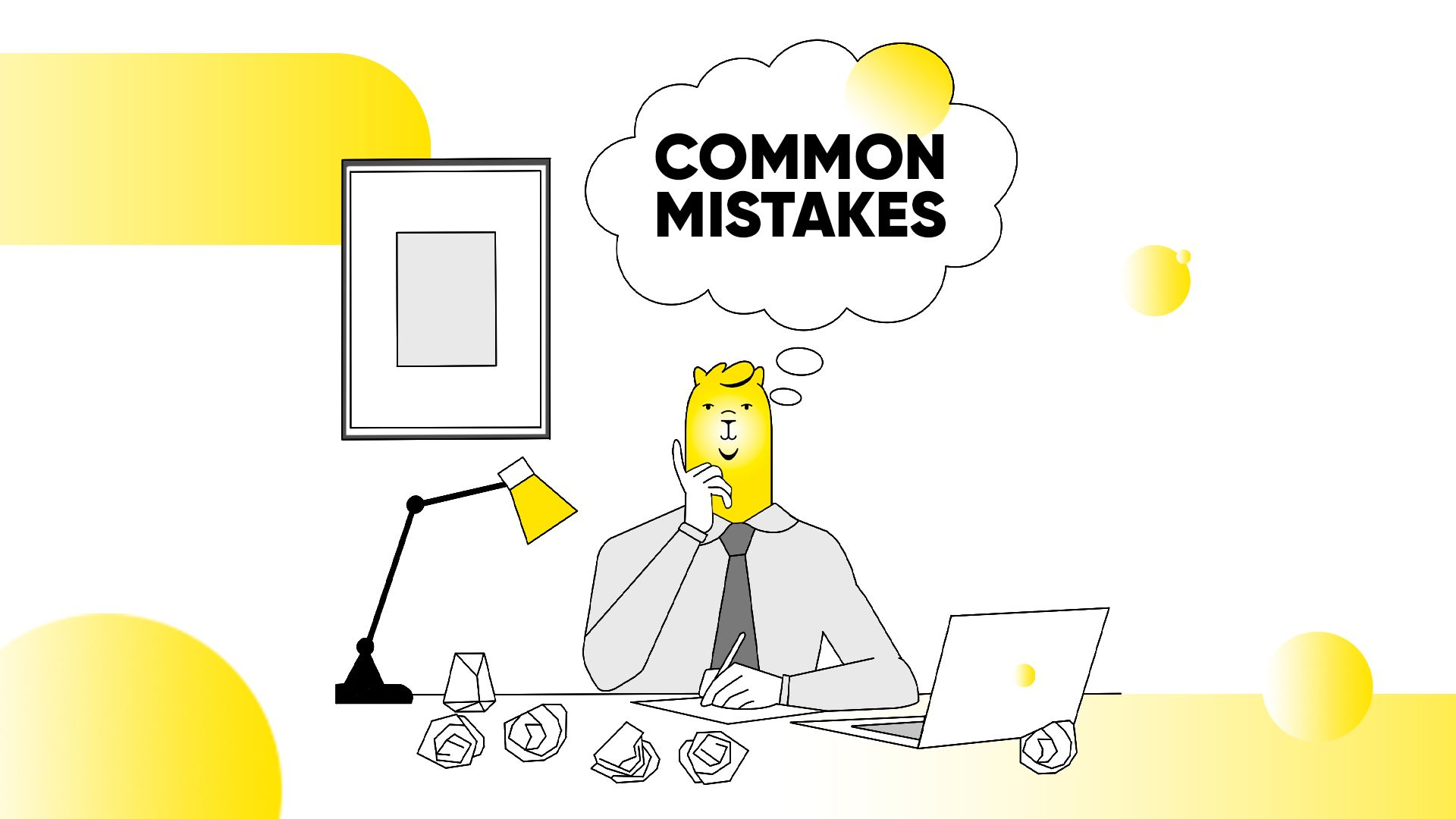
Common Mistakes FMCG Brands Make about Content Marketing
When FMCG brands know about the common mistakes in content marketing, they can avoid repeating them, think about better strategies, and build stronger relationships with their customers.
Three common marketing mistakes for FMCG brands in the Middle East include:
- Treating Content as a Short Campaign
- Focusing on Product Instead of Audience
- Lacking a Measurement Strategy
Treating Content as a Short Campaign
If you ask the brands “What is content marketing Strategy”, many will say it is a one-time campaign, but the most successful ones have an ongoing plan that keeps the audience engaged in the long run.
Focusing on Product Instead of Audience
Brands cannot capture the consumer’s attention only by advertising the product itself. An alternative strategy is to understand the audience’s needs and interests, then create content that meets their needs and builds emotional rapport.
Lacking a Measurement Strategy
It is challenging to find out which content works best without having clear objectives and evaluation strategies. Using measurement tools and setting goals helps improve marketing results.
A Competitive Edge, Not a Luxury
In this article, we learned “What is Content marketing” and how essential it is for the FMCG brands in the UAE and the Middle East. Cultural relevance and privacy mean a lot to the mobile-first audience. Being aware of this, brands focusing on persistent content strategies will gain more advantages.
In addition, building emotional connections through valuable and engaging content is key to success in this competitive market.
